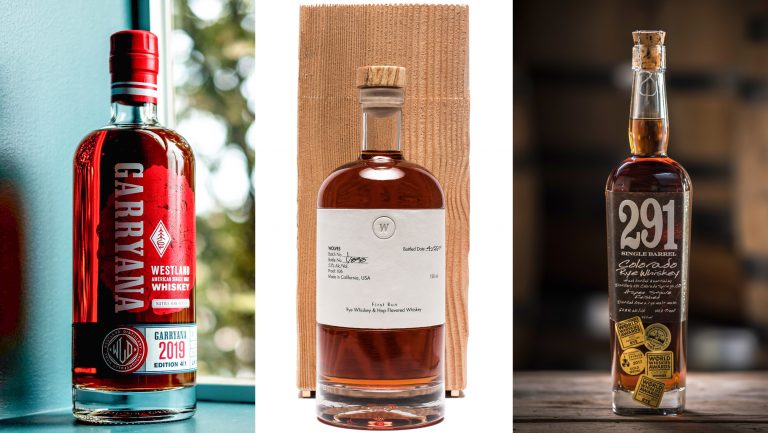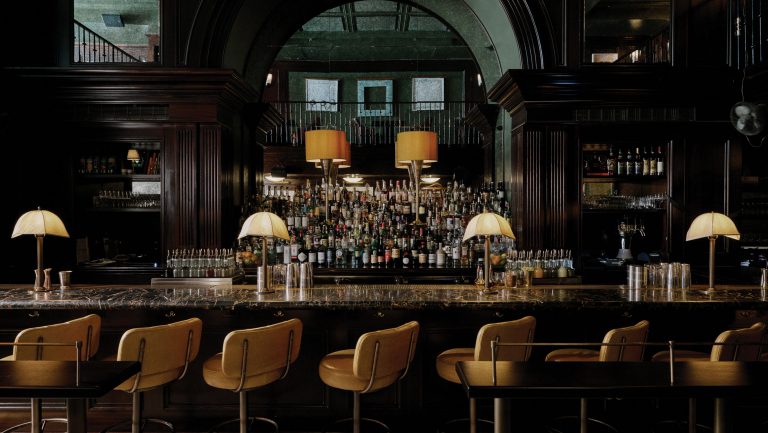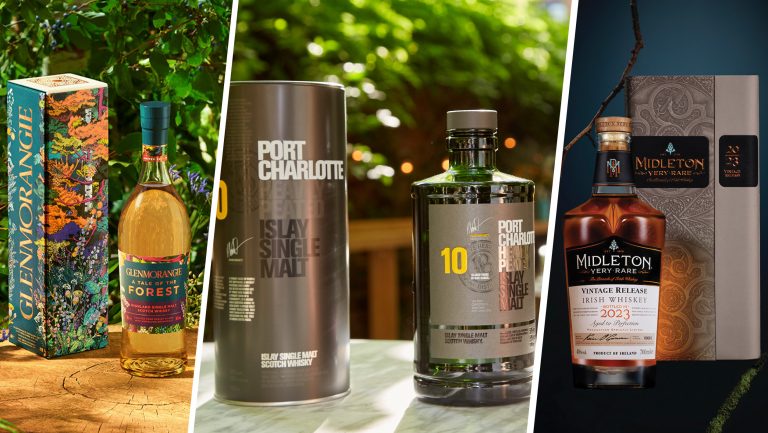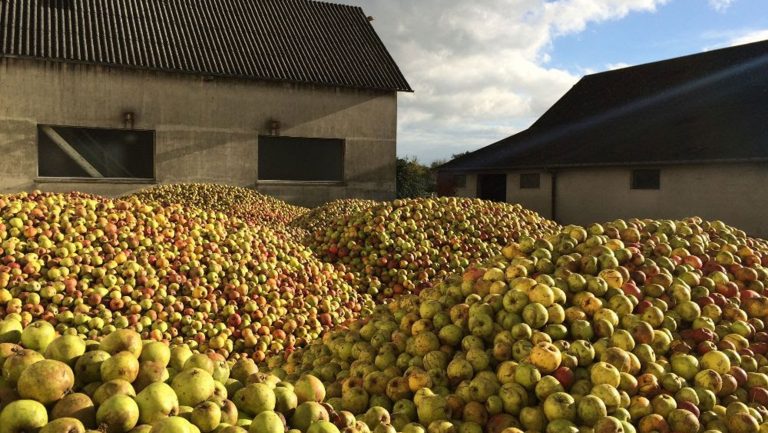Many of today’s craft whiskeys don’t taste like your granddad’s Old Grand-Dad. Whether millet grain is mixed into the mash bill, or hickory staves are used in aging, these new whiskeys seem to have flavor profiles that have been twisted and distorted by a funhouse mirror. However they’re made, they’re different. And makers are proud of it.
It’s been craft distillery dogma that to stand apart from the majors—Jim Beam, Evan Williams, Jack Daniel’s, and others—distillers have to embrace alternative approaches that produce alternative flavors. “You can’t out–Maker’s Mark Maker’s Mark,” the saying goes. The big producers will always win with their economies of scale, distribution agreements, and marketing budgets, so craft distillers have created new taste profiles out of necessity. Until about a decade ago, whiskey that didn’t taste like whiskey was seen as a flaw. Bourbon was made overwhelmingly of yellow dent corn, the most economical of commodity grains; rye, when you could find it, was timid and didn’t confront drinkers with its spice.
Nobody knows how many craft distillers are producing whiskeys that flout the norms, but the overall number of active craft distillers has grown to nearly 1,800-plus, according to a 2018 report from the American Craft Spirits Association, from under 100 just 15 years ago. Many of these producers are touting bourbons made from grains like Jimmy Red corn and millet, and getting flavors from toasted or charred wood rather than the standard white oak—in doing so, they’re finding new ways to reach consumers who aren’t beholden to the whiskeys of the past.

Don’t miss the latest drinks industry news and insights. Sign up for our award-winning newsletters and get insider intel, resources, and trends delivered to your inbox every week.
A Flavor-focused Approach to Making Whiskey
For Jon Buscemi, the cofounder of the Los Angeles–based luxury footwear and accessories brand Buscemi, his “regular business” is fashion—that is, selling high-end Italian sneakers, among other products. His business model includes the occasional release of new styles in limited quantity, which triggers a small mania in which his shoes go up in value in the aftermarket.
As a co-owner of Wolves Whiskey in Ukiah, California (along with James Bond, of the Los Angeles streetwear brand Undefeated), Buscemi is taking a similar approach to marketing his whiskeys. “We wanted to start a brand that had a different philosophy and ethos,” he says. “We didn’t want to do the traditional game plan. We wanted to treat it like our regular business.”
Wolves Whiskey is made by the noted distiller Marko Karakasevic, at Charbay Distillery, also in Ukiah. Buscemi’s labels are made of Italian sheepskin leather, and his first limited release was initially available only through the online retailers ReserveBar and Flaviar, not at bars or liquor stores. The release, priced at $150, consisted of 900 bottles and sold out; Buscemi is looking at tripling production for the next round.
Distilled from stout and IPAs and “smoothed out” with rye made by MGP Ingredients, a distilled spirits and ingredients supplier based in Atchison, Kansas, Wolves Whiskey’s release has a taste that departs from that of traditional whiskeys, but not wildly so. It’s got powdery notes reminiscent of balsa wood, and a robust underlayer of char, yet Buscemi considers the flavor profile somewhat irrelevant for marketing. “About half of the consumers aren’t necessarily whiskey connoisseurs, but they’re people in our network and are supporting us,” he says. “The other half are guys into American whiskey looking for something new.” Among these are fans of Charbay. “For sure, a few hundred bottles were purchased because Marko was involved in it.”
Buscemi is looking not so much to grab a bigger slice of the whiskey market pie but to bring a whole other pie to the party by luring non-whiskey drinkers. That’s an approach repeated by other producers of whiskeys with nontraditional taste profiles. Generally, they’re looking to bring in consumers from outside the usual crowd—curious foodies, fashionistas, locavores, and boundary pushers of every stripe.
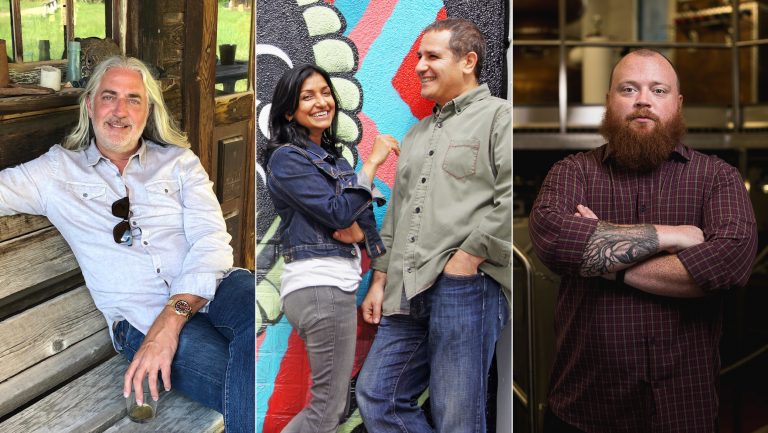
Michael Myers, the founder of Distillery 291 in Colorado Springs, wanted to create a whiskey that wouldn’t be confused with a Kentucky bourbon but that consumers could identify as being in the same family, albeit from a generation that had moved to the Rocky Mountains. “If I was really far out,” says Myers, “then it would be too different—then you’re creating a completely new market, and that’s tough.”
Distillery 291 produces rye, bourbon, and American whiskey (corn, malted rye, and malted barley), all retailing for $48 to $98. The whiskeys are made in a pot still and aged in small oak barrels but finished with toasted aspen, which dries out the whiskey’s sweetness and lends a distinctive, slightly nutty taste.
Myers says he’s drawing in “new whiskey drinkers who think, ‘This is really cool, and I want to share this with my friends.’” But he also appeals to those curious consumers who want to sample widely. “People are funny,” he says. “They like to be the first person to try something different that’s good. Because of the craft market, I think people are definitely searching for and trying different things.”
Whiskeys with bold and unexpected flavors are also attracting inquisitive consumers from the food world. “About two-thirds of our retail whiskey customers fall into the foodie [and] flavor-curious world with growing interest in whiskey,” says Melkon Khosrovian, who founded Greenbar Distillery in Los Angeles with his wife, Litty Mathew, in 2004. They experimented with some 30 different woods before settling on a handful used in steeping batches of whiskey. Their Slow Hand Six Woods whiskeys (which retail for $49.99, and $69.99 for a cask-strength offering) are aged in white oak, with toasted staves of hickory, maple, mulberry, red oak, and grape wood added later. “In the musical vernacular, we took a symphonic approach to wood,” says Khosrovian, “versus the soloist approach that virtually everyone takes with white oak.”
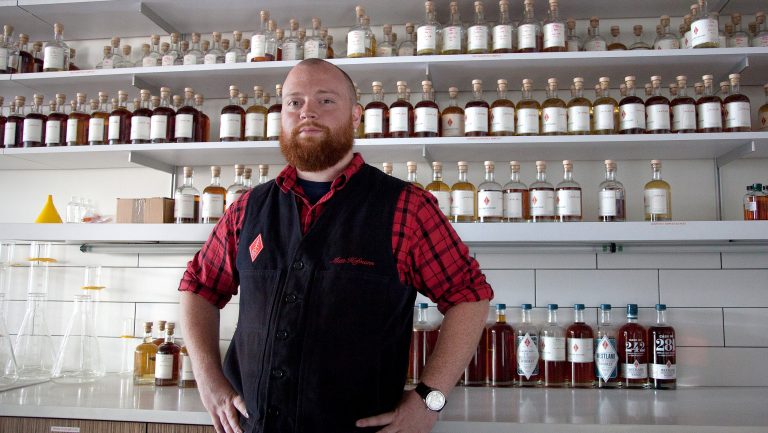
The Emerging Styles of American Single Malt
Distillers discuss three prominent subcategories that are making their way to the forefront
Creating Whiskeys to Appeal to a Broader Demographic
Many consumers are familiar with whiskey, and if they’re not, they are fascinated by new flavors. “The other third [of Greenbar’s retail customers] comes from the aficionado realm,” says Khosrovian. “[They’re] bored with their chosen categories and are looking for alternatives, while others are exploring as much of the realm as they can in a decidedly encyclopedic way.” His consumer demographic tends to fall in the 35 to 50 age range, about 60 percent of whom are men.
Others who arrive at whiskey without any particular preconceptions about flavor are locavores, who are seeking flavors that represent a region through its products—whether that’s produce, grain, meat, or beverage. Matt Hofmann, master distiller of Westland Distillery in Seattle, encounters these drinkers when they seek out his limited releases of single-malt whiskeys aged in barrels made of Oregon white oak, which is native to the Northwest. Blended with whiskey from other casks, the oak adds what Hofmann calls a Kansas City barbecue note. That’s not traditional, but it sells out each year. (Westland’s fourth release, out this month, will number 3,750 bottles; it will retail for $150.)
“There’s a new type of drinker out there,” Hofmann says. “They may not be a die-hard whiskey person, and frankly, I fall into this category. I’d rather have a mezcal with provenance, or a rye whiskey from Finland. People have been doing this with beer and wine, but there is a huge and growing sector of the population that’s looking at spirits the same way.”

Dispatch
Sign up for our award-winning newsletter
Don’t miss the latest drinks industry news and insights—delivered to your inbox every week.
Wayne Curtis is the author of And a Bottle of Rum: A History of the New World in Ten Cocktails and has written frequently about spirits for The Atlantic, Imbibe Magazine, Punch, The Daily Beast, and Garden & Gun, among others.

